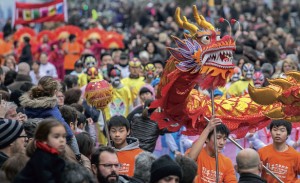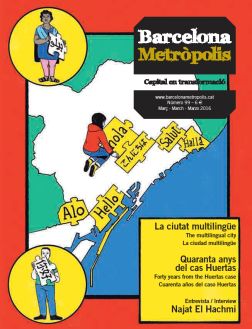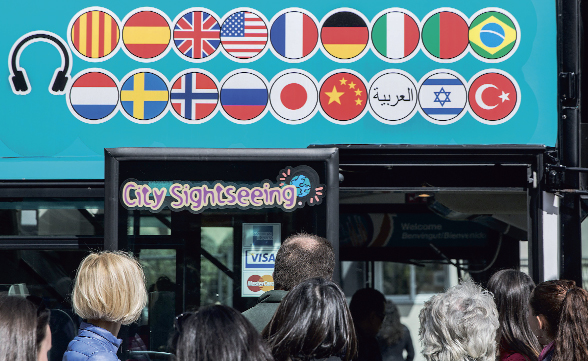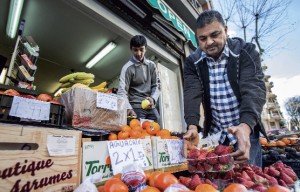The list of the most widely-spoken languages in Barcelona shows that languages transcend borders and that linguistic diversity is the norm. This can facilitate exchanges and represents an additional asset for the city’s economic future.
At Linguapax International, we have suggested fostering the linguistic diversity present in Catalan and Barcelonian society as a another way of emphasising the wealth of diversity and the potential of all languages for social cohesion and intercultural dialogue.
We have ever more quantitative and qualitative data about life in Barcelona. We know fairly well what the people who live in the city are like: where they come from, where they were born, how many years they have lived here, their gender, their education, etc. However, there is one important thing we do not know: their home language or languages. Sociolinguistics has tended to talk about home language or mother tongue. The reality, though, is that plurilingual families have been a constant in countries with great linguistic diversity (the European continent would surely be the exception), and today, they are no longer the exception in our country.
We do not know which languages residents born abroad identify with and feel associated with. And we do not know this because we have not asked them. When registering as local citizens, they are asked for their birthplace and nationality, but not their home language. If there are around 200 states in the world and around 6,000 languages (data from the Linguistic Society of America’s website), it seems clear that within states, language diversity is the norm and not the exception.

A celebration of the Chinese New Year on the Passeig de Sant Joan in February 2015.
Photo: Pere Virgili.
This lack of knowledge is very interesting from the perspective of a society such as Catalonia’s, which is highly sensitive to the situation of languages. Although we do not have official and precise data, some approximations have been made to find out the languages of the people of foreign origin who live in our region and the city. For example, the Ministry of Education has information on the home languages of pupils and students, as well as the language of those who are in welcome programmes, having recently arrived from foreign countries. In addition, the University of Barcelona’s Threatened Language Study Group – GELA has worked to identify the languages of people in Catalonia and has already counted more than 300. We have another source of (qualitative) information thanks to cooperation and immigration organisations, and studies have also been carried out within some communities.
No specific question has been asked and, when it is, it must be well defined. We must not forget that the prejudices or stigmas associated with languages travel with the speakers, and that is something of particular significance for languages that are not officially recognised. An example of such a language is Punjabi, the usual language among the inhabitants of the Pakistani Punjab (as well as the Indian Punjab), but one that is not officially recognised in Pakistan, which classes Urdu as the exclusive national language. When asked, Pakistani Punjabi speakers often say their language is Urdu and do not want to be acknowledged as speakers of a language that still lacks recognition. This has undoubtedly occurred or may occur with speakers of other languages without a state, as is, the case of Tamazight speakers from Morocco or Quechua speakers from Peru, Ecuador or Bolivia.
People change cities
From an economic, urban and sociological perspective, Barcelona has changed significantly and decisively over the course of the 20th century, and now, in the 21st century, the consequences of these changes are taking shape in different ways. One of the most visible transformations is in demographics: Catalonia and Barcelona have grown thanks to the arrival of people from around the world. In Barcelona, the population born abroad has soared from 7.8% in the year 2000 to 22.26% in 2015, while in terms of nationality, the population with nationalities other than Spanish has gone from 6.34% in 2001 to 17% in 2014 (data from the city’s Municipal Institute of Statistics – IME).
Finding out the countries and regions of origin, together with data from other sources consulted (Ministry of Education, GELA and IME) allows us to get a certain idea of the languages with the most speakers: Arabic, Basque, Bengali, English, French, Galician, German, Guaraní, Hindi, Italian, Mandarin, Occitan, Pashto, Punjabi, Portuguese, Quechua, Romanian, Russian, Spanish, Tagalog, Tamazight, Ukrainian, Urdu and Wu Chinese. If we wanted to be more precise, we would have to expand the list of nationalities to include groups with around 1,500 to 2,000 people. In that case, we could expand the list of languages to include Bulgarian, Fula (Cameroon, Nigeria, Senegal, Sudan, etc.) Georgian, Igbo or Yoruba (Nigeria), Mandinka (Senegal, Gambia, Guinea-Bissau), Soninke (Mali, Gambia, Guinea, Guinea Bissau, Mauritania and Senegal) and Wolof (Senegal, Gambia, Guinea, Guinea Bissau, Mali, Mauritania).
The list reveals that languages transcend borders and that linguistic diversity is the norm, as well as the fact that this huge volume of languages is a potential source of exchanges of all kinds and an additional asset for the city’s economic future. Barcelona is becoming consolidated as an even more cosmopolitan and diverse capital.
This linguistic diversity is not reflected in the public sphere. For example, people with Italian nationality constitute one of the three nationalities with the most presence in eight of the ten municipal districts. Based on this volume and distribution, Italian should be a language with a prominent presence in many areas, although this clearly does not hold true. Maybe not all people with Italian nationality have Italian as their home language, as they may have been born far from Europe more than two generations ago1. This is also one of the paradoxes concealed by the word “nationality”.
A large number of Barcelona’s Pakistani population can be found in El Raval as well as in Poble-sec and Parc de Montjuïc, and it is increasingly normal to hear Urdu and Punjabi in private conversations and also in the establishments run by speakers of these languages. English is an asset for the Filipino community (also present in these neighbourhoods), and is particularly valued in domestic service and childcare jobs, while Tagalog occupies a limited space in private spheres. The Chinese community is particularly large in the neighbourhoods of Fort Pienc and L’Esquerra de l’Eixample, although their presence is extending to all the city through the shops and bars they run. In Turó de la Peira and Ciutat Meridiana, Ecuadorians, Bolivians, Hondurans and Dominicans are the majority, so there is surely space for Quechua, Aymara and Guaraní in the private sphere. At the other end of the spectrum, English is the most visible language in the public space, after Catalan and Spanish, and its presence continues to grow.
The languages that travel with people today search for their space to live decently within Barcelona. It is a shared responsibility to ensure that the heritage they provide becomes a driver for wealth and opportunities. At Linguapax Internacional, this is what we are working to do.
Note
- 2014 data for all of Catalonia. People with Italian nationality born in Italy, 49% of the total; in Argentina, 25.5%; in Spain, 6.9%; in Uruguay, 6.2%; and in Venezuela, 2.4%.





